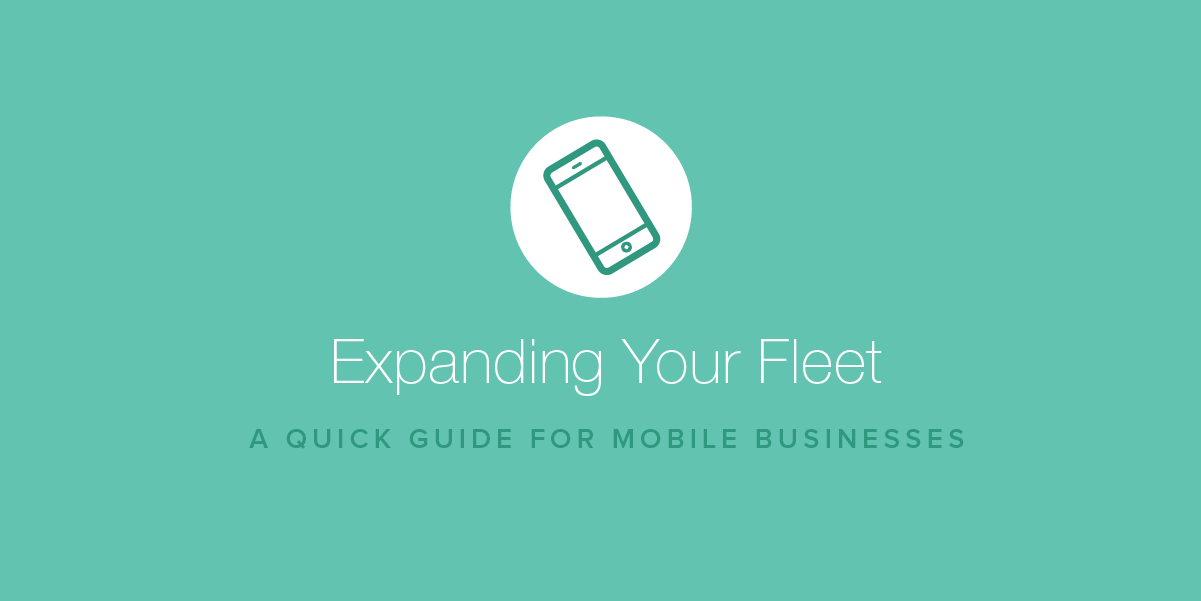Expanding Your Fleet: A Quick Guide for Mobile Service Businesses
- June 20, 2018
- By: Vonigo
This article about how mobile service businesses can expand their fleets is by Irene Malatesta. Irene is a business content strategist with Fundbox. She’s passionate about working with entrepreneurs and mission-driven businesses to bring their stories to life. Fundbox is dedicated to helping small businesses grow by democratizing access to credit.
Mobile technology has made on-the-go lifestyles more common, and people are busier than ever. Taking the time to shop and do errands simply doesn’t fit into packed schedules.
Smart owners of mobile service businesses are meeting consumer demand for more convenient service by bringing goods and services to their customers’ doorsteps.
Low-Cost Expansion for Mobile Service Businesses
Mobile service businesses are now offering everything from pet grooming to bike repair whenever and wherever you need it. The only thing you need to get started is a vehicle — and when business starts to boom, you don’t need to buy or lease expensive real estate. You can simply add to your fleet.
Whether you are a one-person operation or you have multiple employees, expanding your company is probably part of your business plan. After all, you don’t want to be in the position of turning customers away because you are too successful. For mobile service businesses that rely on trucks or other vehicles to deliver goods and services, increasing production capacity means adding to your fleet.
Deciding exactly when and how to do that can be a balancing act. These tips will help you get the timing just right.
Look at Your Current Financial Health
 The first step before you make any major moves is to ensure you clearly understand your current state. If you haven’t already prepared financial statements, now is the time — and if you get stuck, enlist the help of finance or accounting professionals. The two most important documents are the balance sheet and the income statement.
The first step before you make any major moves is to ensure you clearly understand your current state. If you haven’t already prepared financial statements, now is the time — and if you get stuck, enlist the help of finance or accounting professionals. The two most important documents are the balance sheet and the income statement.
- Balance Sheet. This document compares your assets to your liabilities. It shows you whether you have equity in your mobile business or you are underwater.
- Income Statement. Also known as a profit and loss statement. This document illustrates how your money is coming in — and where it is going out. You can clearly see your revenue as compared to your expenses. You can determine whether you are making a profit — and if so, how much.
List the Benefits (and Risks) of Going Big
The next step is to do some brainstorming. Think of all the ways an additional vehicle will help you bring in more business. For example, will you be able to double the number of clients you serve? When calculating benefits, keep your figures realistic. If you don’t already have new customers waiting for your expansion, consider how many you will have immediately upon purchasing a new car or truck, and how long it will take to reach your target revenue.
Of course, you also have to consider the downside of expanding your fleet. Obviously, your overhead expenses will go up, so your increased production isn’t all profit. Will you have to take out an equipment business loan or leverage your unsecured business line of credit? The debt will go on your balance sheet and the payments will impact your income statement.
Predict the Future
The final step is to complete financial projections. They will show what your balance sheet and income statement will look like once you have made some changes. From here, your next step is clear. Can your business can be more profitable if you expand your fleet? It may be time to take the plunge.
There are a variety of opportunities to get the small business financing and advice you need when it’s time to purchase a car or truck for your company. Alternative lenders like Fundbox can help make getting access to financing for those purchases faster and easier.
Want to learn more about how to grow your business, with software designed specifically for mobile service businesses? Book a free, private demo of Vonigo.



